A friend recently turned me on to an article in the Lubbock Avalanche-Journal about a fascinating wolf behavior reported by early Texans.
In February 1877, a rancher named John Lovelady, riding on horseback below the caprock south of the mouth of Yellow House Canyon, witnessed thousands of wolves loping over the plains and up the Yellow House (canyon).
“Chronicles: Why did thousands of wolves lope up the Yellow House?” Lubbock Avalanche-Journal – July 8, 2017
You can read the full article by Ray Cragar and Paul Carlson here–it’s worth your time.
I did some digging and found some mentions of the behavior in the Galveston Daily News and in the book On the Border with Mackenzie which was mentioned in the article.
It’s not clear how accurate these stories are, but there were multiple reports of the behavior. We also don’t know why the wolves had congregated in such numbers, but this was around the time of the mass bison slaughter by hunters. It is possible these wolves had come together to scavenge on the large numbers of discarded bison carcasses or were moving in search of the remaining bison.
The Galveston Daily News – March 5, 1905, p. 27
This story of a mass wolf congregation from 1880 is from an article entitled “The Fenceless Range Era” by Don H. Biggers. It appears to be the same group from Yellow House mentioned in the Lubbock Avalanche-Journal article.
It was of course impossible to ascertain their numbers with any degree of accuracy, but there must have been several thousand of them.
Don H. Biggers
On the Border with Mackenzie by Robert G. Carter
On the Border with Mackenzie details the Comanche Wars, but includes one interesting mention of wolves. This account was from the early 1870s, when there were more bison on the plains. It may be a an exaggerated war story, but it does give us some clues. The large numbers of wolves were drawn to the smell of the bison hunt. An ecological disruption on the scale of killing millions of bison within a decade, could cause unpredictable behaviors their primary predator.
It was only when the hopeless animals were abandoned that the wolves banqueted.
They again congregated by the thousands, coming out of the river bottoms at dusk and remaining until the first streak of dawn.

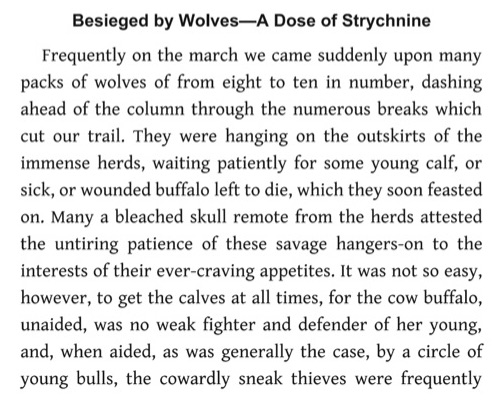
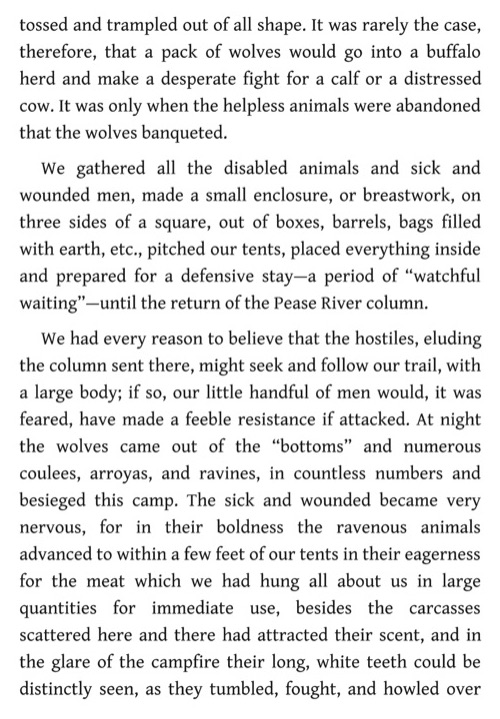
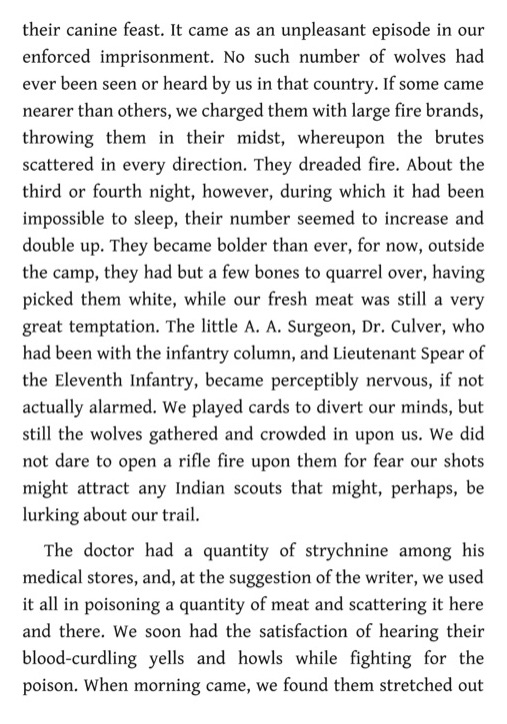
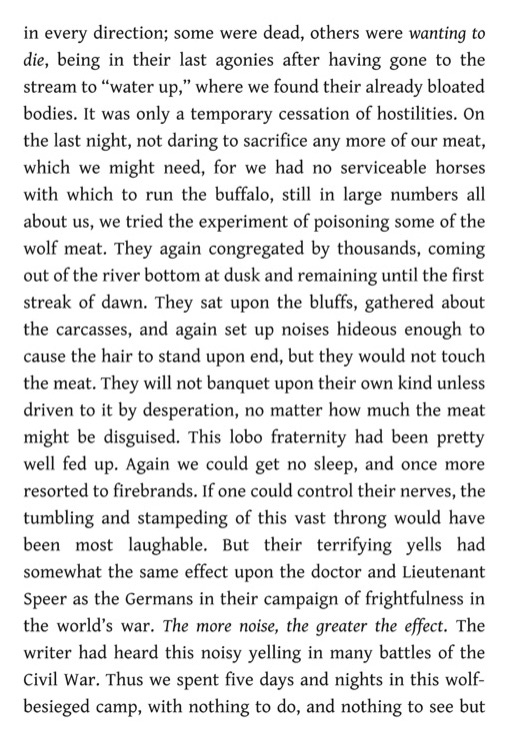

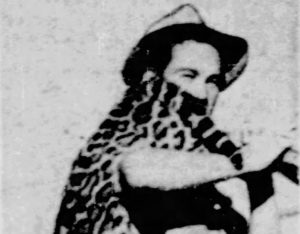
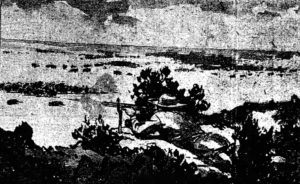
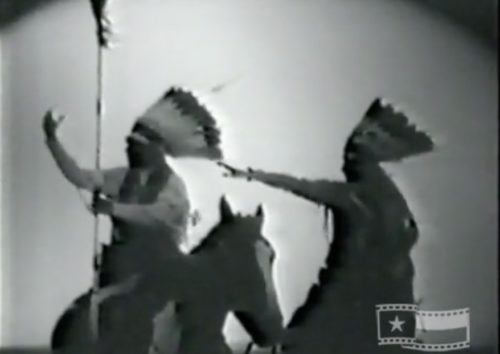
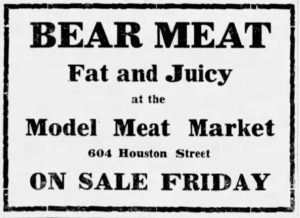
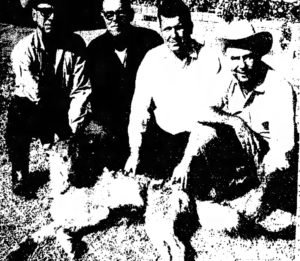
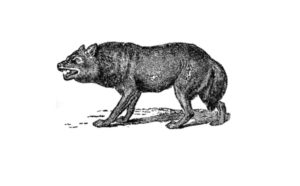
Comments are closed.